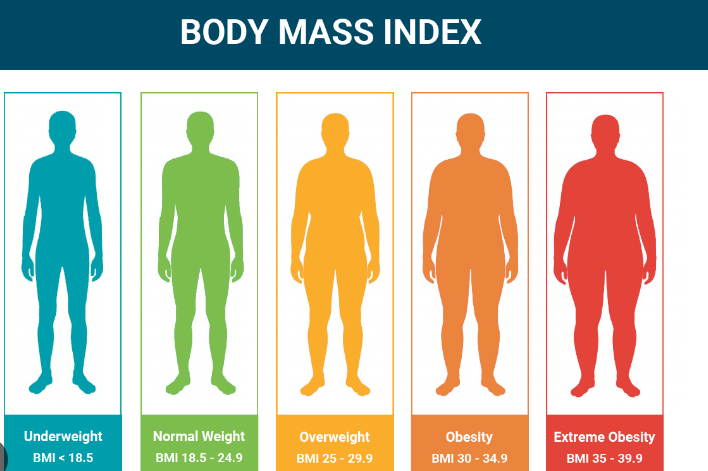Everyone is attempting to lose weight as the new year gets underway, but which is a better indicator of how many pounds to lose: body fat or BMI?
It’s crucial to keep an eye on your BMI and body fat percentage. BMIs are a useful starting point, but they shouldn’t be used in isolation to determine body fat or establish medical diagnoses, according to Claire Edgemon, a senior registered dietitian at Houston’s Baylor College of Medicine. “BMI alone may not provide a reliable indication of a person’s health.”
Also read-Pain Relief: 5 Stability Ball Exercises To Reduce Back And Neck Pain

What makes BMI a less reliable indicator of body fat?
It simply measures a person’s weight in relation to their height; muscle, bone, and fat mass are not taken into account. Furthermore, according to Edgemon, measurements of blood pressure, blood sugar, and cholesterol levels should be made as BMI does not reflect metabolic activity.

Body fat percentage, as opposed to BMI, indicates the proportion of body weight that is made up of fat. Waist circumference provides an easy approach to calculating body fat. Per Edgemon, an excess of 35 inches for women and 40 inches for men indicates a higher likelihood of belly fat and increased health hazards. Body fat percentages can be within a healthy range, but there are other factors to take into account, such as age or gender. In a Baylor news release, she stated, “A healthy body fat range is 25–31% for women and 18–24% for men; this does not consider age or athletic status.”

So, to figure out if you are truly a healthy weight, Edgemon suggests taking both BMI and body fat percentage into account. If you find the results troubling, try focusing on diet and exercise to reach a healthy body fat percentage and/or BMI in the new year. “The recommendation is 150 minutes of moderate activity five days per week, including muscle-strengthening activities two or more days per week to increase your heart rate,” Edgemon said. “Also, the more plant-based you go, the better. Fruits, vegetables, whole grains and lean meats are really good sources of nutrition.”

Frequently asked questions
What is BMI?
Body mass index is a measure of weight adjusted for height, calculated as weight in kilograms divided by the square of height in meters (kg/m2). Although it is often considered an indicator of body fatness, it is a surrogate measure of body fat because it measures excess weight rather than excess fat. Despite this fact, studies have shown that it is correlated to more direct measures of body fat, such as underwater weighing and dual-energy x-ray absorptiometry.
Why use BMI?
It is a simple, inexpensive, and noninvasive surrogate measure of body fat. In contrast to other methods, it relies solely on height and weight and with access to the proper equipment, individuals can have their height and weight routinely measured and calculated with reasonable accuracy. Furthermore, studies have shown that its levels correlate with body fat and with future health risks. A high score predicts future morbidity and death. Therefore, it is an appropriate measure for screening for obesity and its health risks. Lastly, the widespread and longstanding application of it contributes to its utility at the population level. Its use has resulted in an increased availability of published population data that allows public health professionals to make comparisons across time, regions, and population subgroups.
What are some issues to consider when using BMI for adults?
The clinical limitations of it should be considered. it is a surrogate measure of body fatness because it is a measure of excess weight rather than excess body fat. Factors such as age, sex, ethnicity, and muscle mass can influence the relationship between it and body fat. Also, it does not distinguish between excess fat, muscle, or bone mass, nor does it provide any indication of the distribution of fat among individuals.
The following are some examples of how certain variables can influence the interpretation of it:
- On average, older adults tend to have more body fat than younger adults with an equivalent it.
- On average, women have greater amounts of total body fat than men, with an
equivalent BMI. - Muscular individuals, or highly-trained athletes, may have a high it because of
increased muscle mass.
Also read-Cleaning Toxins From Your Home After A Wildfire: Experts Offer Tips
images source: Google
Disclaimer: The opinions and suggestions expressed in this article are solely those of the individual analysts. These are not the opinions of HNN. For more, please consult with your doctor




































